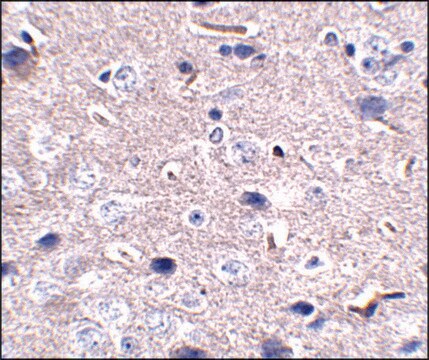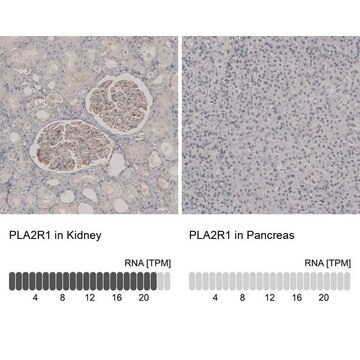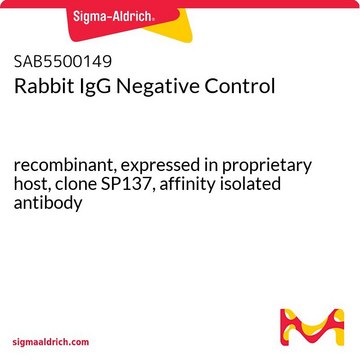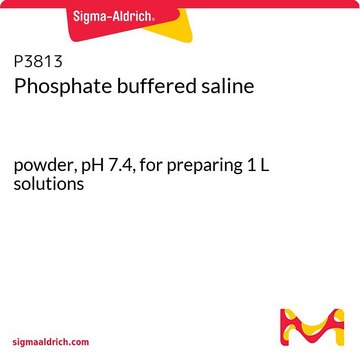MABF925
Anti-FcγRII (human) Antibody, clone AT10
clone AT10, from mouse
Synonym(e):
CD32CDw32, Fc-gamma RII-a, Fc-gamma RII-b, Fc-gamma RII-c, Fc-gamma-RIIa, Fc-gamma-RIIb, Fc-gamma-RIIc, FcRII-a, FcRII-b, FcRII-c, IgG Fc receptor II-a, IgG Fc receptor II-b, IgG Fc receptor II-c, Low affinity immunoglobulin gamma Fc region receptor II-a
About This Item
Empfohlene Produkte
Biologische Quelle
mouse
Qualitätsniveau
Antikörperform
purified immunoglobulin
Antikörper-Produkttyp
primary antibodies
Klon
AT10, monoclonal
Speziesreaktivität
human
Methode(n)
flow cytometry: suitable
Isotyp
IgG1κ
NCBI-Hinterlegungsnummer
Versandbedingung
dry ice
Posttranslationale Modifikation Target
unmodified
Angaben zum Gen
human ... FCGR2A(2212) , FCGR2B(2213)
Allgemeine Beschreibung
Spezifität
Immunogen
Anwendung
Entzündung & Immunologie
Immunoglobuline & Immunologie
Flow Cytometry Analysis: A representative lot was conjugated with Phycoerythrin (PE) and immunostained the surface of human Burkitt′s lymphoma Ramos cells transfected with FcγRIIB, but not untransfected Ramos cells (Courtesy of Professor Martin J. Glennie, University of Southampton, UK).
Flow Cytometry Analysis: Clone AT10 hybridoma culture supernatant was employed to detect FcγRII-positive peripheral blood lymphocytes (PBLs) by flow cytometry (Greenman, J., et al. (1991). Mol. Immunol. 28(11):1243-1254).
Immunoprecipitation Analysis: A representative lot immunoprecipitated FcγRII from human K562 erythroleukemic cells (Greenman, J., et al. (1991). Mol. Immunol. 28(11):1243-1254).
Affinity Binding Assay: Affinity binding study using the Fab′ fragment of clone AT10 showed an equilibrium binding constant (Ka) of 5.3 x 10^8/M and a total of 1.5 x 10^5 binding sites per K562 cell (Greenman, J., et al. (1991). Mol. Immunol. 28(11):1243-1254).
Neutralization Analysis: The F(ab′)2 fragment of clone AT10 blocked FcγRII-dependent B-cell activation by a chimeric anti-CD40 mAb with human IgG1 Fc (ChiLob 7/4 h1) induced in the presence of FcγRII-overexpressing 293F as the crosslinking cells (White, A.L., et al. (2015). Cancer Cell 27(1):138–148).
Neutralization Analysis: Both the Fab′ and F(ab′)2 fragments of clone AT10, but not control IgG1 or control F(ab′)2, blocked K562 cells from rosetting with rabbit IgG-coated chick red blood cells (CRBCs) (Greenman, J., et al. (1991). Mol. Immunol. 28(11):1243-1254).
Neutralization Analysis: The F(ab′)2 fragment of clone AT10 blocked the lysis of chick red blood cells (CRBCs) by effector cells via redirected cellular cytotoxicity (RCC; antibody-dependent cell-mediated cytolysis; ADCC) mediated by an anti-CRBC monoclonal antibody (E11C12) (Greenman, J., et al. (1991). Mol. Immunol. 28(11):1243-1254).
Qualität
Flow Cytometry Analysis: 1.0 µg of this antibody detected FcγRII in 1x10E6 human peripheral blood mononuclear cells (PBMCs).
Zielbeschreibung
Physikalische Form
Lagerung und Haltbarkeit
Handling Recommendations: Upon receipt and prior to removing the cap, centrifuge the vial and gently mix the solution. Aliquot into microcentrifuge tubes and store at -20°C. Avoid repeated freeze/thaw cycles, which may damage IgG and affect product performance.
Sonstige Hinweise
Haftungsausschluss
Sie haben nicht das passende Produkt gefunden?
Probieren Sie unser Produkt-Auswahlhilfe. aus.
Lagerklassenschlüssel
12 - Non Combustible Liquids
WGK
WGK 2
Flammpunkt (°F)
Not applicable
Flammpunkt (°C)
Not applicable
Analysenzertifikate (COA)
Suchen Sie nach Analysenzertifikate (COA), indem Sie die Lot-/Chargennummer des Produkts eingeben. Lot- und Chargennummern sind auf dem Produktetikett hinter den Wörtern ‘Lot’ oder ‘Batch’ (Lot oder Charge) zu finden.
Besitzen Sie dieses Produkt bereits?
In der Dokumentenbibliothek finden Sie die Dokumentation zu den Produkten, die Sie kürzlich erworben haben.
Unser Team von Wissenschaftlern verfügt über Erfahrung in allen Forschungsbereichen einschließlich Life Science, Materialwissenschaften, chemischer Synthese, Chromatographie, Analytik und vielen mehr..
Setzen Sie sich mit dem technischen Dienst in Verbindung.







